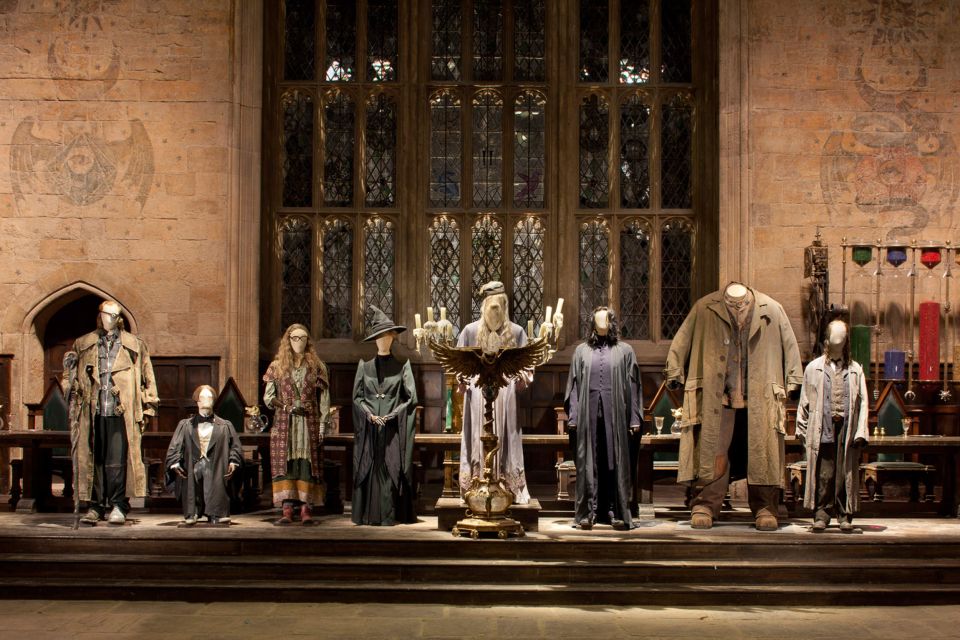Creature Effects
Creature Effects
Find and see up-close how the fantastical and mythical creatures were brought to life onscreen.

GOBLINS
Goblins play bank officials and tellers at Gringotts bank in Diagon Alley in the Harry Potter film series. Each goblin was given a distinct personality, which could be seen in their various facial features, thanks to Nick Dudman, Creature and Make-Up Effects Designer, and his team. To transform 60 actors into goblins in just four hours for the scene inside Gringotts Bank in Harry Potter and the Deathly Hallows – Part 2, 140 make-up professionals from across Europe were needed. Because goblin prosthetics could not be reused after being removed at the conclusion of each day’s filming, multiples of each goblin head were constructed for each day of the shoot.
ARAGOG – The Acromantula
Aragog had a leg reach of nearly 18 feet and could crawl out of a tunnel and deliver lines in Harry Potter and the Chamber of Secrets, created by Nick Dudman and Production Designer Stuart Craig. Each of Aragog’s hairs was hand-inserted using a special needle and a variety of materials ranging from broom bristles and coconut chunks to the center of feathers. It took almost 15 people to operate the animatronic Aragog on set for Harry Potter and the Chamber of Secrets, with four of them working behind the scenes as puppeteers for the back four legs.
THE BASILISK
In Harry Potter and the Chamber of Secrets, the Basilisk that lurks deep beneath Hogwarts was produced using a combination of practical and visual effects. The creature team built a full-size actual Basilisk mouth for Harry to fight against in the Chamber of Secrets’ fight scene, measuring 30 feet long with 3-foot-deep jaws. The aquatronic model was able to move, reducing the amount of CGI work required. In the fight sequences, the model could even slide up a track to get closer to Harry.
BUCKBEAK – The Hippogriff
Buckbeak the Hippogriff was produced in three life-size animatronic models for the Harry Potter film series: one upright, one rearing, and one lying down. Each feather had to be carefully inserted and put into the Buckbeak models by the Creature Effects team. Buckbeak’s designers were inspired by real birds, particularly the Golden Eagle, for the creature’s profile.
